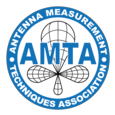Patrick Pelland, Greg Hindman, Daniël van Rensburg, November 2016
Spherical near-field (SNF) antenna test systems offer unique advantages over other types of measurement configurations and have become increasingly popular over the years as a result. To yield high accuracy far-field radiation patterns, it is critical that the rotators of the SNF scanner are properly aligned. Many techniques using optical instruments, laser trackers, low cost devices or even electrical measurements [1 - 3] have been developed to align these systems. While these alignment procedures have been used in practice with great success, some residual alignment errors always remain. These errors can sometimes be quantified with high accuracy and low uncertainty (known error) or with large uncertainties (unknown error). In both cases, it is important to understand the impact that these SNF alignment errors will have on the far-field pattern calculated using near-field data acquired on an SNF scanner. The sensitivity to various alignment errors has been studied in the past [4 - 6]. These investigations concluded that altering the spherical acquisition sampling grid can drastically change the sensitivity to certain alignment errors. However, these investigations were limited in scope to a single type of measurement system. This paper will expand upon this work by analyzing the effects of spherical alignment errors for a variety of different measurement grids and for different SNF implementations (phi-over-theta, theta-over-phi) [7]. Results will be presented using a combination of physical alignment perturbations and errors induced via simulation in an attempt to better understand the sensitivity to SNF alignment errors for a variety of antenna types and orientations within the measurement sphere. Keywords: Spherical Near-Field, Alignment, Uncertainty, Errors. References [1] J. Demas, “Low cost and high accuracy alignment methods for cylindrical and spherical near-field measurement systems”, in the proceedings of the 27th annual Meeting and Symposium, Newport, RI, USA, 2005. [2] S. W. Zieg, “A precision optical range alignment tecnique”, in the proceedings of the 4th annual AMTA meeting and symposium, 1982. [3] A.C. Newell and G. Hindman, “The alignment of a spherical near-field rotator using electrical measurements”, in the proceedings of the 19th annual AMTA meeting and symposium, Boston, MA, USA, 1997. [4] A.C. Newell and G. Hindman, “Quantifying the effect of position errors in spherical near-field measurements”, in the proceedings of the 20th annual AMTA meeting and symposium, Montreal, Canada, 1998. [5] A.C. Newell, G. Hindman and C. Stubenrauch, “The effect of measurement geometry on alignment errors in spherical near-field measurements”, in the proceedings of the 21st annual AMTA meeting and symposium, Monterey, CA, USA, 1999. [6] G. Hindman, P. Pelland and G. Masters, “Spherical geometry selection used for error evaluation”, in the proceedings of the 37th annual AMTA meeting and symposium, Long Beach, CA, USA, 2015. [7] C. Parini, S. Gregson, J. McCormick and D. Janse van Rensburg, Theory and Practice of Modern Antenna Range Measurements. London, UK: The Institute of Engineering and Technology, 2015
